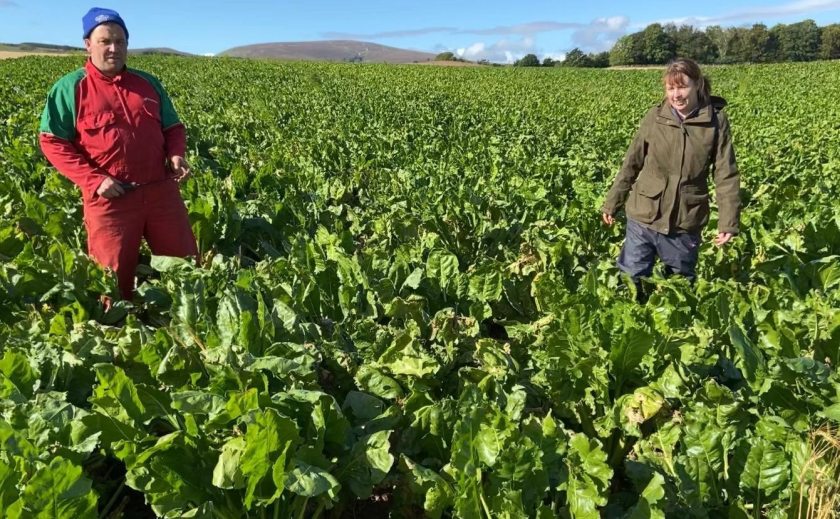
A new three-part video series has been launched to highlight the benefits of feeding fodder beet to livestock this winter.
The clips detail the benefits of fodder beet, which is recognised as having the potential to be the cheapest forage per kg of dry matter.
Quality Meat Scotland (QMS) and SAC Consulting say it also has one of the most affordable forages per megajoule of energy due to its nutritional characteristics.
A new guide will also be available by the two groups, and includes additional information on how to estimate yield, transitioning stock onto beet, and top tips on field layout and contingency planning.
Kirsten Williams, beef and sheep specialist for SAC Consulting said: “Interest in the crop has increased, stemming from its potential to provide added benefits to livestock producers, the main one being the yield potential, which is larger than any other forage crop grown in the UK.
“Other benefits include its excellent digestibility, greater weed control options available compared to forage crops in the brassica family, and the ability to grow fodder beet in rotation with brassica crops such as swedes in a livestock situation.”
The video series and guide aim to inform farmers on yield assessment prior to grazing and key considerations when feeding both cattle and sheep on the crop.
Ms Williams explained that fodder beet is a sugar rich energy feed that required careful management of grazing stock.
"Cattle must be structurally transitioned on to the crop to prevent rumen acidosis and both cattle and sheep should be vaccinated for clostridial infections prior to grazing.
"This is due to beet increasing the chance of such infections due to the high sugar load in the intestines,” she added.
